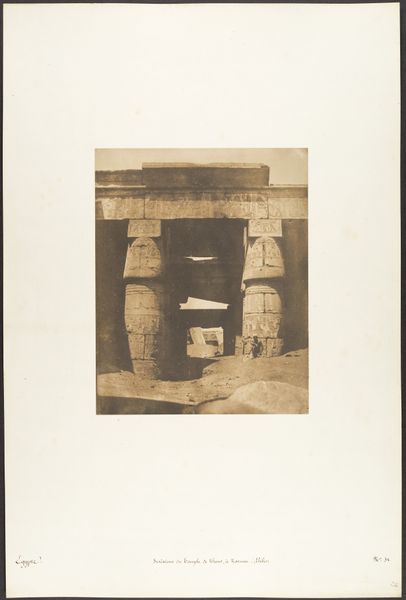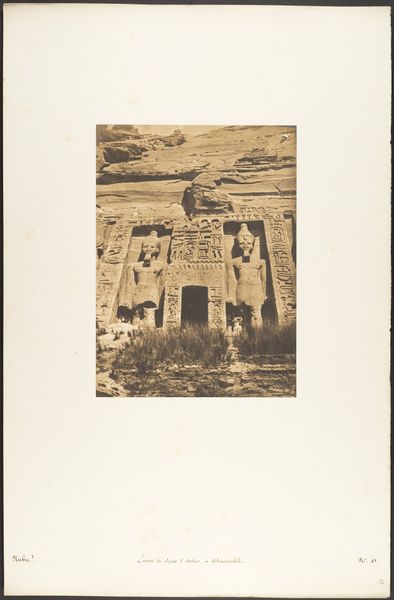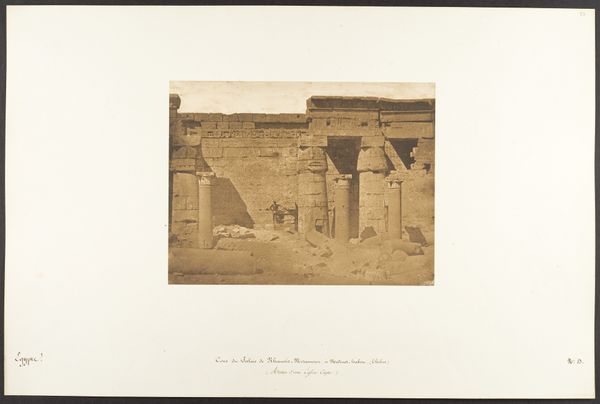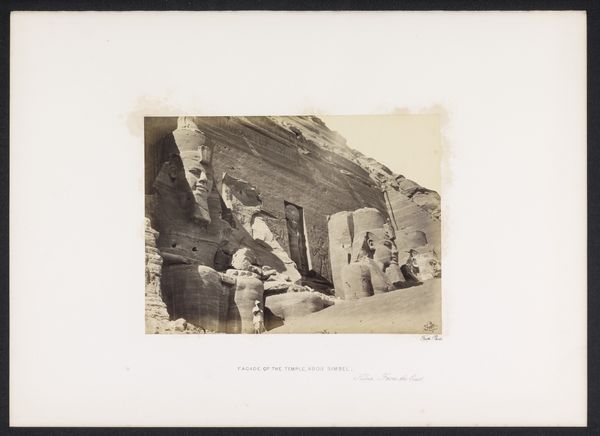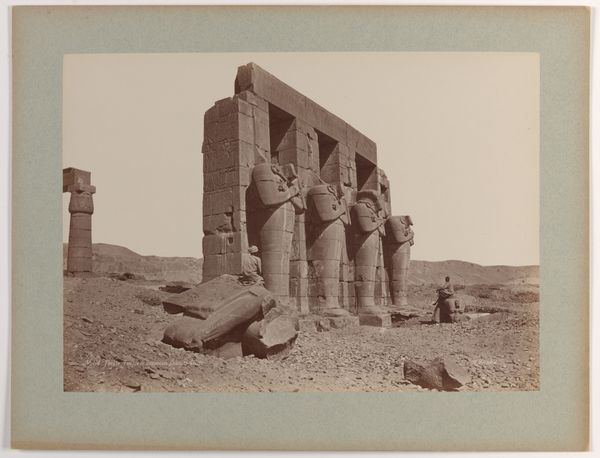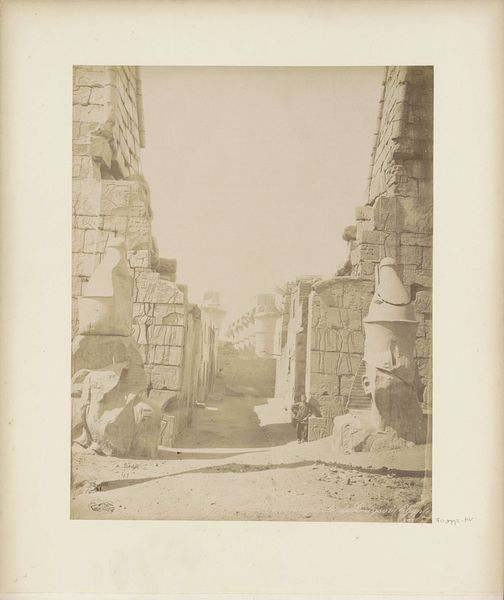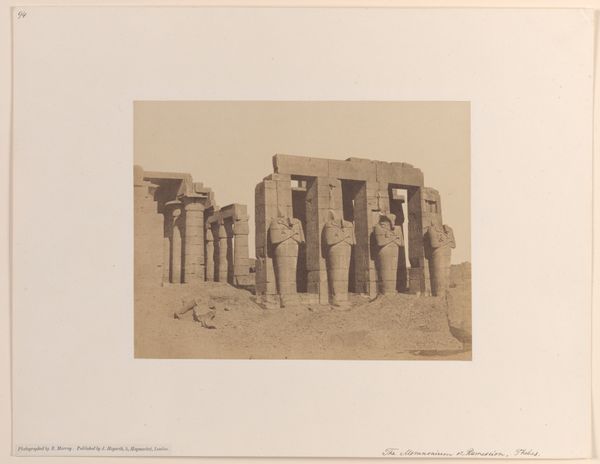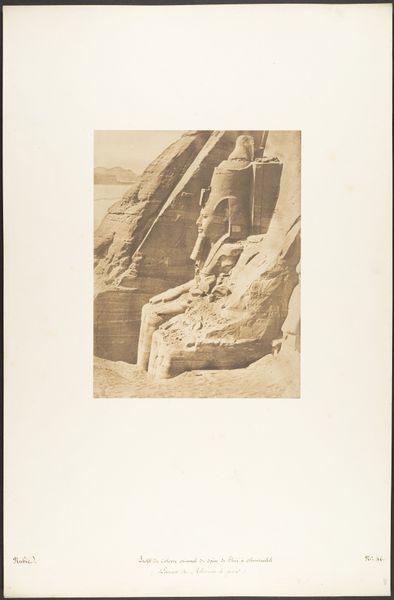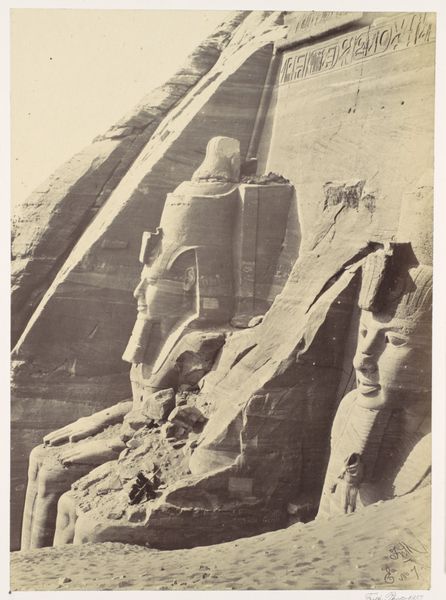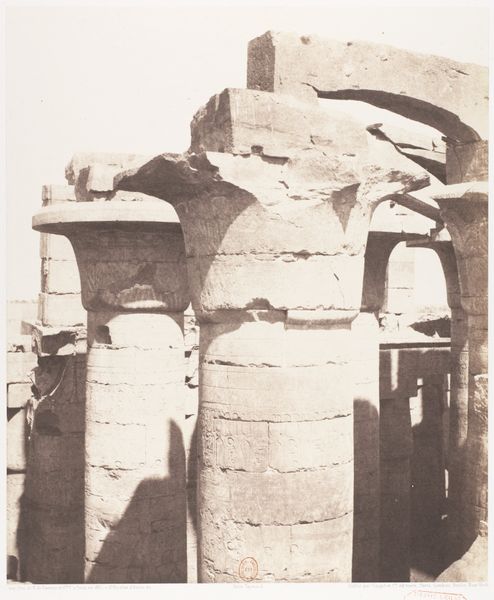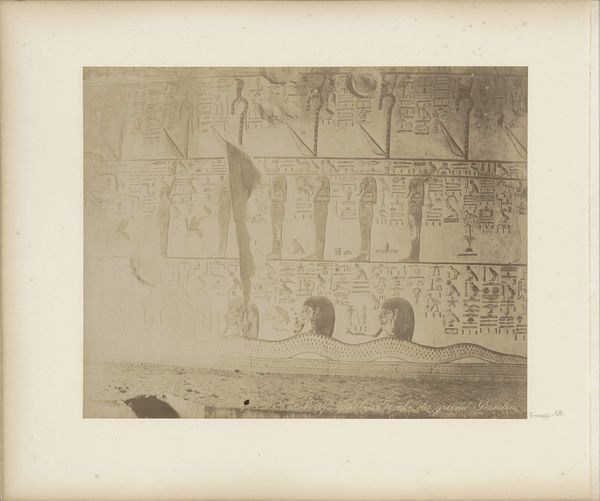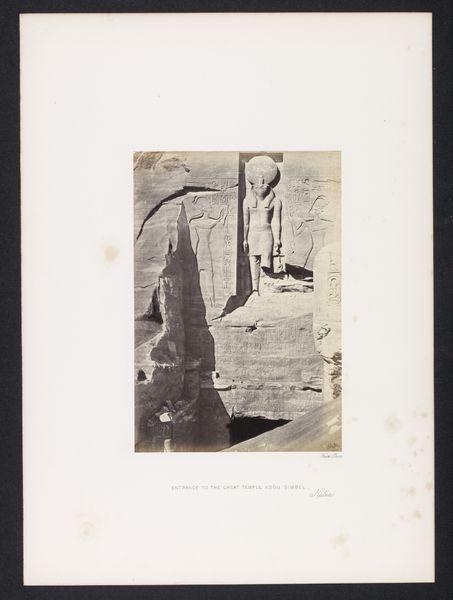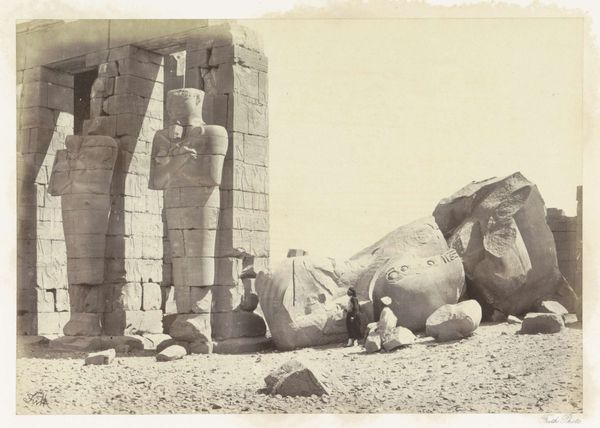
Kolos bij de ingang van de tempel van Ramses II bij Aboe Simbel before 1859
0:00
0:00
photography, sculpture
#
portrait
#
landscape
#
ancient-egyptian-art
#
photography
#
carved into stone
#
ancient-mediterranean
#
sculpture
Dimensions: height 231 mm, width 161 mm
Copyright: Rijks Museum: Open Domain
Editor: So this is "Kolos bij de ingang van de tempel van Ramses II bij Aboe Simbel" by Francis Frith, a photograph taken sometime before 1859. It’s striking how this massive sculpture is captured in such delicate detail. What narratives do you see embedded in this photograph? Curator: This image presents us with a compelling intersection of power, representation, and colonial history. We're looking at a photographic representation of ancient Egyptian power – Ramses II – mediated through the lens of a 19th-century British photographer. Consider how Frith, as a Westerner, chose to frame and represent this monument. Is he simply documenting, or is he also subtly reinforcing a particular view of ancient Egyptian civilization as 'other' and, perhaps implicitly, available for Western interpretation and even appropriation? Editor: That’s a good point. It's easy to overlook the photographer's own cultural baggage when looking at these older photographs. The "othering" is really interesting. How does that play into contemporary discussions of repatriation? Curator: Precisely! This image can fuel a dialogue about ownership and cultural heritage. Who gets to tell these stories, and where should these artifacts reside? Should the focus be on Western museums, or is it essential to prioritize repatriation efforts and allow these artifacts to be recontextualized within their original cultural settings? It raises fundamental questions about justice and representation. Editor: That makes me think about the responsibility museums have to acknowledge these complexities and to be transparent about the histories of their collections. Curator: Absolutely. And how artists today are using similar imagery to challenge and subvert those historical power dynamics. Ultimately, this photograph is not just a record of the past, but a powerful catalyst for critical conversations in the present. Editor: I hadn’t thought about the contemporary connections so directly, but now it gives me so much more to think about when I see historical photographs like this.
Comments
No comments
Be the first to comment and join the conversation on the ultimate creative platform.
